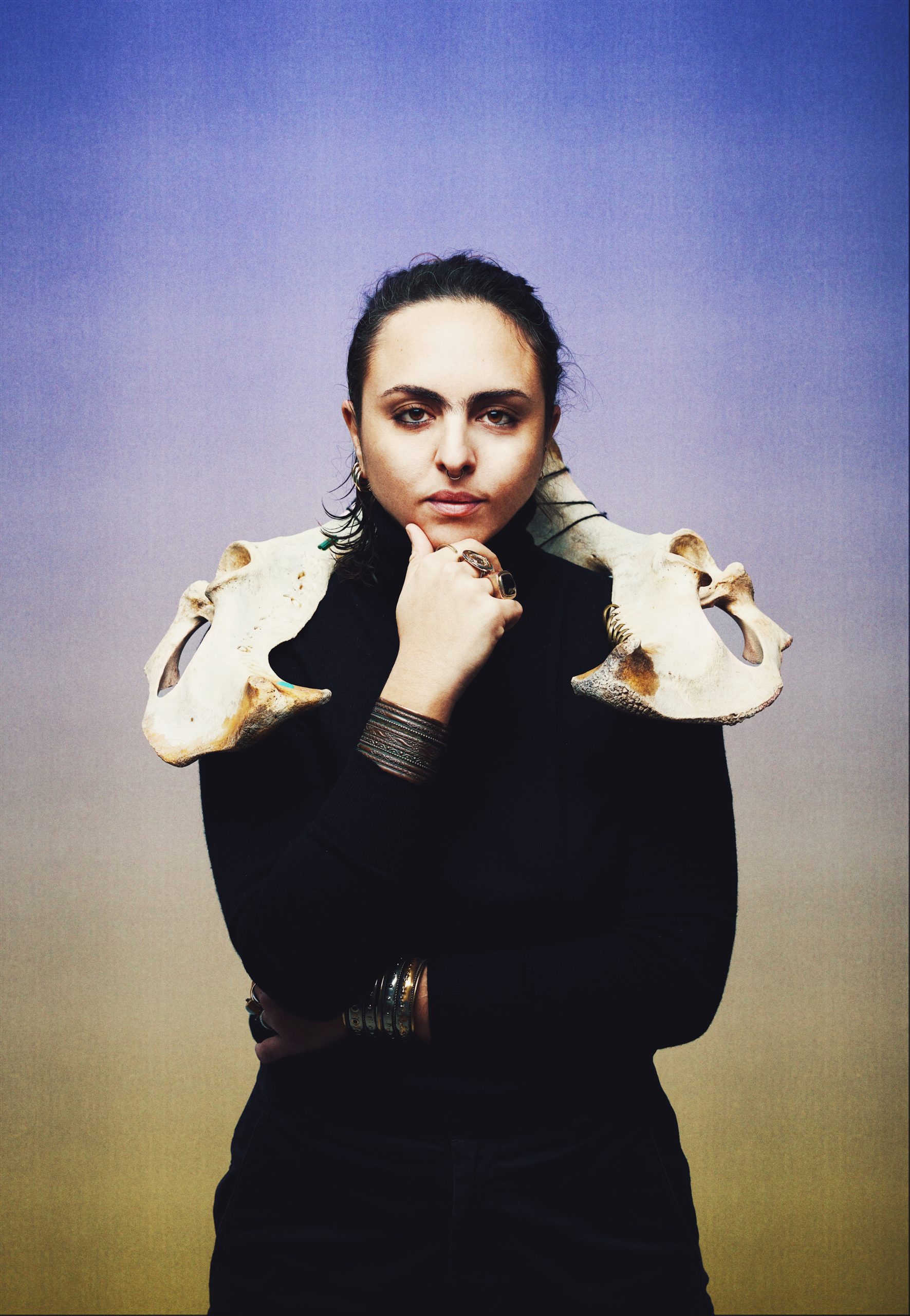
Aïcha Snoussi
Born in Tunis in 1989, Aïcha Snoussi lives and works between Sète and Tunis. Aïcha Snoussi is a graduate of the Institut Supérieur des Beaux-Arts in Tunis and the Sorbonne University in Paris. In 2020, she won the Sam Prize for Contemporary Art and the first prize of the Fondation Rambourg for her project “Underwater”, an archaeological fiction about a queer civilization rediscovered on the African coast. Nominated for the third edition of the Reiffers Art Initiatives Prize, her work is exhibited at the Acacias Art Center from April 26 to June 8, 2024.
Biography
Aïcha Snoussi's work questions rooted narratives, the authority of knowledge and the power dynamics that shape history, from a queer perspective.
Drawings proliferate, occupying the spaces they occupy, and merge with installations made of archives, sculptures, objects and organic materials meticulously collected, engraved and assembled. In his practice, the tool of drawing takes the form of a blade that opens and skins paper and concepts.
Her work questions the relationship of drawing and the object to history, memory, ruins, vestiges, gender norms and forms of resistance. She takes an archaeological approach to manipulating matter, excavating the layers of an encyclopedia transformed into a codex of anti-knowledge, or engraving bones to extract political content and singular languages.
Texts
"Aïcha Snoussi"
— Palais de Tokyo, 2023
Born in 1989 in Tunis, Aïcha Snoussi lives and works in Paris. Aïcha Snoussi's work questions notions of identity and the validity of standards and classifications through drawings and installations that combine fiction and archives. By blurring the lines of reality to reveal the vestiges or traces of a history that she has reinvented, the artist develops a personal mythology which refers to episodes of our contemporary history (gender identity and migration) while by summoning a bundle of intimate references.
His work questions the relationship of drawing and the object to history, to memories, to ruins, to what remains, in organic and poetic arrangements in dialogue with the places invested in situ.
His work questions the relationship of drawing and the object to history, to memories, to ruins, to what remains, in organic and poetic arrangements in dialogue with the places invested in situ.


